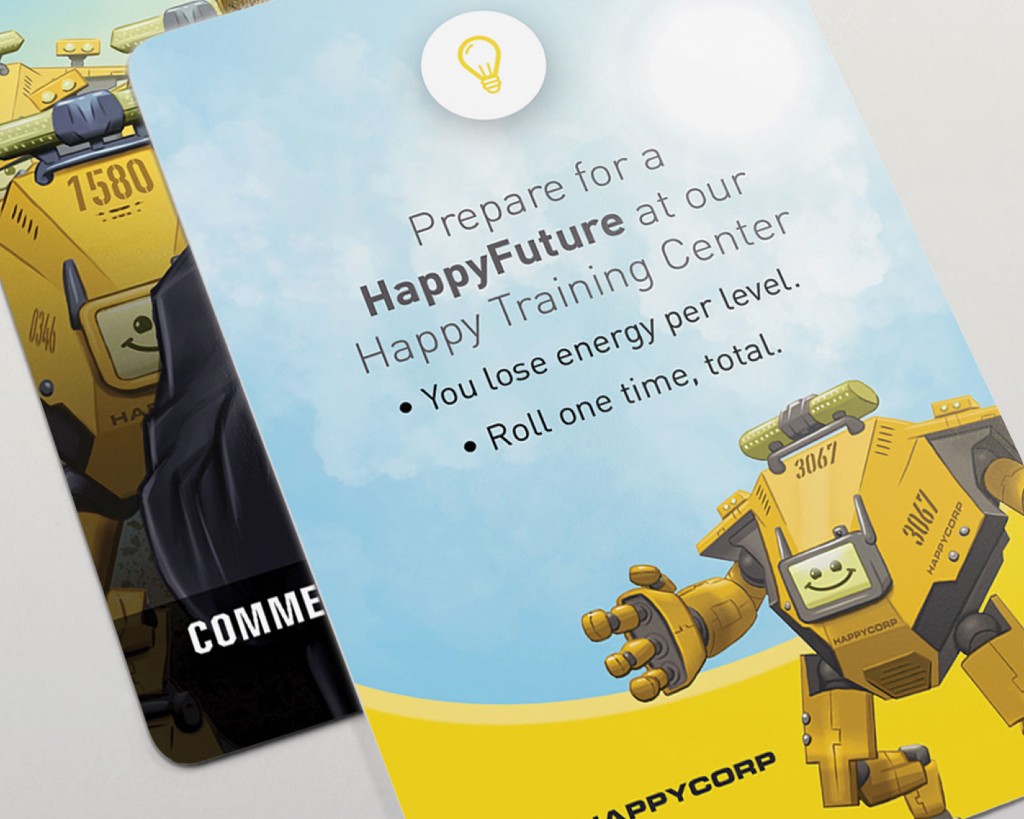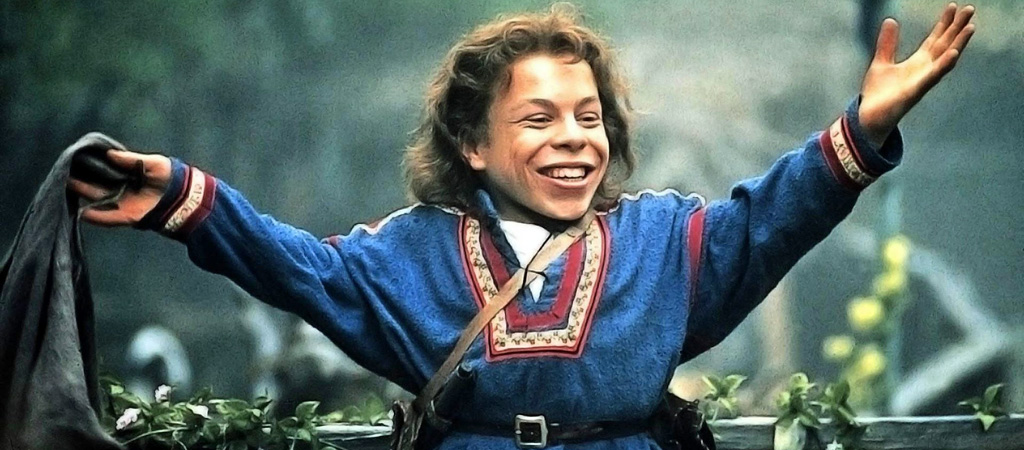Even in the best of times, it’s never perfectly safe to travel. There are risks that are inherent to every trip you take — from the plane/bus/car/boat crashing to falling off a cliff while taking a selfie. But 2020 has added a new layer of risk to the travel equation: the COVID-19 pandemic. By the very act of leaving home, you’re opening the door to potentially spreading a disease that’s killing around three percent of the people who contract it. You could even do so asymptomatically.
There’s just no denying the increased risk (however slight) of spreading/contracting COVID for anyone who travels. But as with most risks, it is possible to mitigate these dangers.
On one end of the spectrum, of course, you could simply not travel in any way. If you don’t have to get on a plane right now, why are you? The world is bracing for second and third waves of the pandemic. Where do you really need to go? Do the people who live there want you to visit? Who might you be endangering? Though not traveling wouldn’t drop your overall coronavirus risk to zero, it would eliminate your risk of spreading or contracting coronavirus while away from home on a leisure trip.
A more moderate approach would be to listen to the advice of epidemiologists and public health experts with regards to road-tripping, hotel stays, or flying. In this scenario, you’d still follow the CDC Guidelines for travel during COVID. Especially this one:
Don’t travel if you are sick or if you have been around someone with COVID-19 in the past 14 days. Don’t travel with someone who is sick.
And this:
Is COVID-19 spreading at your destination? The more cases at your destination, the more likely you are to get infected during travel and spread the virus to others when you return.
Also, this:
Your chances of getting COVID-19 while traveling also depend on whether you and those around you take steps to protect yourself and others, such as wearing masks and staying 6 feet away from people outside your household (social distancing).
Between those two poles — not traveling and traveling moderately and sensibly (we’re not entertaining the other far end of the spectrum: traveling without any precautions or thought to the wellbeing of others) — there are endless shades of gray. And they’re not simple to navigate. To help us add context to the conversation, we reached out to professional travel writers, photographers, TV hosts, podcast hosts, and videographers. These are people who travel for a living and had to readjust their lives to manage the new risks of a world still very much in the throes of a pandemic. They’re people who think about travel every single day, because their actual livelihoods depend on it.
For this roundtable discussion, we tapped:
-
Melanie Sutrathada — Travel, food, and style host, influencer, and writer.
-
Brian McIntosh — Travel photographer and influencer.
-
Alex Alex — Travel, food, and style host, writer, and influencer.
-
Mike Schibel — Travel writer and podcaster.
-
Kinga Phillipps — Travel TV host on Travel Channel, BBC, and Epix.
-
Karl Watson — Travel writer and YouTube travel host
Check their answers below. Hopefully, their thoughts add helpful nuance to this issue as you navigate it for yourself.
Do you think it’s okay to travel before 2021?
Melanie:
The topic of travel is so complicated right now. It is different for everyone and is such a personal decision during these unprecedented times. I only recommend traveling by mode of public transportation like a plane, train, or bus if it’s absolutely essential. There are still so many unknowns and variables that we have to take into account and safety comes first. If traveling has taught me anything, it’s that we are more similar than different, so we owe it to one another to do what’s right. Going to Mexico on spring break with 20 friends is not acceptable during a global pandemic. We have to put the health of one another first. COVID-19 does not discriminate and until we see numbers decreasing significantly, it feels irresponsible to travel unnecessarily and put others at risk.
The exception for me would be carefully-planned road trips to National Parks or other destinations where you have very limited contact with others. I’ve seen a handful of people actively traveling for fun and without caution these past few months and it comes off as very tone-deaf and like they are not taking this global pandemic seriously. Let’s just say that I’ve hit the unfollow button more times than I’d like to admit.
Brian:
I definitely think it’s okay to travel before 2021. At this point, if you don’t know how to place a mask on your face, wash your hands or sanitize the surfaces you touch, then you are just being reckless. You can’t control what other people do around you to limit the spread, but you can definitely control what you do.
On my recent flights, I’ve noticed airlines trying their best to spread out customers — so that they are sitting beside the people they know. None of the planes that I’ve been on have been loaded to capacity, which was reassuring to see. I know with Air Canada, they issue care packages on every flight. These packages contain a mask, a bottle of sanitizer, a bottle of water, gloves, and a few other things. I’ve personally witnessed every passenger adhering to the rules when it comes to wearing their masks.
Putting airlines aside, I think if travelers avoid immersing themselves in city life and place more of an emphasis on connecting with nature (where you are naturally distanced from other people) or choosing Airbnbs over hotels, then we should have greater confidence in being able to live through this pandemic while trying to clamp down on this viral spread. Now, if you want to resume life as normal and party it up with everyone else on a beach or at a club, then I can’t say traveling will be safe for you (or the people around you) at any time before there’s an available vaccine.
Alex:
I personally will not be traveling for leisure before 2021. I think, at this moment, traveling for leisure should be considered very carefully, and weighing the risks should be everyone’s personal social responsibility.
I relocated to London from Helsinki about two weeks ago due to my partner’s work situation, a move that had been carefully planned for over a year and completely unavoidable as it seriously would have affected our livelihood. Otherwise, traveling for leisure will have to wait and all of our travel plans are officially canceled until further notice.
Mike:
I think it’s okay to travel. Where you travel, how you travel, and WHY you travel is the real question.
Kinga:
I do think it’s okay to travel, with precautions. As testing becomes widely available for all folks, for free, and results are coming back quickly — now it’s less than 24-hours; my first test in May was 13 days; oof — we can take the necessary steps to make sure we are protecting ourselves and others. We are also all pretty clear that masks limit the spread of COVID … we are all clear on this, right? So wearing a mask over your full-face (not the weird nose-exposed look I’ve seen people sporting) is a gesture of goodwill for those around us and ourselves as well.
As far as “where,” well, that depends on what locations are letting travelers in. I’m planning a trip to Tahiti. That will require me to take a test before I leave and one when I land. I am happy to do that to visit a whale-laden paradise! I also call ahead and ask hotels and adventure outfitters if they are being responsible. If I’m going diving, you bet your ass I’m going to call you to make sure your dive shop is being responsible, and you bet your ass I will leave if I see that you are not.
Karl:
Trying to answer this is a bit like when people ask you for advice about visas. It all depends on where you’re traveling from and where you’re traveling to. What are the infection levels like where you are? And what are they like where you’re going? Those questions have to be answered — first and foremost.
What precautions are you taking before you leave for any potential trip?
Melanie:
My precautions before leaving would definitely include getting tested at least seven-days prior and taking a Rapid Results test 24-hours before I travel. I would pack hand sanitizer with at least 60-percent alcohol, extra face masks, and disinfectant wipes. I would check the travel restrictions on the destination and plan accordingly, making sure to allow for the 14-day quarantine period many states are requiring. I would look into the airlines I was considering flying with and carefully review their safety precautions, opting for airlines that are blocking the purchase of a middle seat, and enforcing the requirement of a face mask that covers the nose and mouth.
I’ve heard horror stories of nearly full flights and passengers who refused to properly wear masks. I want to avoid the airlines who do not put the safety of their crews and passengers first.
Brian:
There isn’t any precaution that I’m taking that I haven’t been practicing on a daily basis. The main precaution is carrying a few masks with me so I can change them out when they become soiled. It’s important for me to have ones that are breathable so I’m not tempted to take them off. Breathable masks also make it easier for me to enunciate my words when I’m trying to speak to someone.
Alex:
This year, I am not traveling for leisure. We are currently living in London due to my partner’s job. We still have our second home-base in Helsinki, and it will be a carefully considered and well thought out plan should we decide to visit. At the moment, we have nothing on the books because safety comes first. However, should we need to visit our home-base for work purposes, we will do so taking every measure and precaution possible, including testing, self-isolation, and whatever else is necessary.
Mike:
I have not had the desire to fly for the sake of flying. If I had business or a family reason, I would fly. Prior to the road trips I took, I checked weather and fire conditions and also made sure I had plenty of supplies in case I got stuck somewhere away from home.
Kinga:
I do a COVID test before I leave. I also research and book flights and seats and activities that are not jam-packed, and I research the destination I am heading to — to make sure I am not landing in “COVID Central.” If I am, then I practice my side-eye to those being irresponsible.
Karl:
I live by myself and work from home. So as long as I’m following my local area’s standard guidelines of social distancing, wearing a mask, cleaning my hands, then I’m fine.
What precautions are you taking while on the road?
Melanie:
While on the road, I make sure to wash my hands often, use hand sanitizer whenever soap and water are not available, wear my face mask any time social-distancing is not possible, and wipe down all of the commonly-used surfaces with disinfectant wipes. Small details like not wiping down the gas pump could make all the difference and the more precautions we all take now, the better off we will be.
I also avoid common spaces like lounges and lobbies, minimizing interaction with strangers.
Brian:
I like to rent cars when I’m away, so I can better explore my destination. So I make sure to keep a bottle or two of hand sanitizer in the car whenever I want to snack on something while I’m driving. They also are needed to simply wipe down the steering wheel and other surfaces in case the rental company wasn’t on their A-game with cleaning!
And of course, I make sure to bring a mask in the car — in case I forget to bring one with me whenever I leave my accommodation.
Alex:
I would not suggest traveling at this time. But if it is unavoidable, then I highly suggest all who do to get tested first and foremost. Next, I would have a serious consideration concerning how important is this trip to my livelihood? Can it be postponed or moved to a later date, or could it be done virtually?
Mike:
Extra mask, water, snacks. Trying not to stop if I don’t have to — this has been really hard when I really want to visit a local ice cream shop on a hot day.
Kinga:
I wear a mask over my mouth AND nose the entire flight and bring enough sanitizer to flood a continent. I also recently did a road trip from L.A. to Houston and along the way booked hotels that advertised online as being responsible. Trust me when I say that parts of the Midwest (and elsewhere) are taking this quite lightly and some businesses — from hotels to restaurants to gas stations — are being very flippant about it. It’s totally okay to politely ask someone to give you space or to walk out of a restaurant that is not being cautious (I only do takeout unless it’s outside and super spaced out). We did. It’s your own health after all.
I also avoid crowded locations. No need to be in a restaurant or bar or at a party right now.
Karl:
The same as when I’m at home, just follow the local guidelines. And if I’m not sure what the local rules are, just behave how I would at home, which, come to think of it, is good generic travel advice anyway!
What precautions are you taking when you get home?
Melanie:
This is a question that we need to be talking about because the risk isn’t over when you get back. We pose a risk to our family, friends, and those in our communities when we get home from travel, especially if it’s from a place where the COVID-19 numbers are high. I would get a Rapid Results test immediately upon returning and then quarantine, just in case, while still wearing a face mask and maintaining social-distancing rules when it’s absolutely mandatory to leave the home.
Brian:
Thankfully, I don’t need to interact with many people when I am home. But the precautions are the same. I think if I continue to build this habit of wearing a mask, limiting the surfaces that I touch, and using sanitizer where water and soap are not available, then I’ll carry these good habits in every situation that I’m in. If I don’t have a mask on hand, then I definitely try to keep my distance from others.
Alex:
Anyone traveling in these times should be up to date on testing before and after travels, as well as self-isolating after arrival at their final location. Again, this highly depends on where one is traveling from and where they are traveling to. I can only comment on the Finnish perspective (I’m American/Finnish) since that is where I have been residing. Each country is different and we need to respect the safety measures that have been put in place to protect one another.
Mike:
I wash all my shit really well! Also, I share with others about the trip to inspire them and let them know it’s safe to travel — if you’re smart.
Kinga:
I wait for three days and take a COVID test. Until I do, I am cautious about where I go and who I interact with.
Karl:
I came back from a non-travel job in Switzerland last month, and the U.K. government’s rules were that I had to quarantine for 14 days, so I did just that. That’s pretty easy for me since I live by myself and can work from home. I’m fortunate in that sense.
What’s your plan if you get sick while traveling? What does sheltering in place look like on the road? How would you cover those costs?
Melanie:
I would 100 percent shelter-in-place and alert my host or the manager of the accommodations and discuss our options. I think people are afraid to admit that they are not feeling well and instead pretend that they are completely fine because they don’t want to miss out or be shamed for having COVID-19. But, we can’t be afraid to say that we are showing symptoms in fear that we won’t be able to do all the fun things that come with travel. We have a responsibility to one another. I don’t want to be the reason that someone else gets sick and if it comes to covering a hotel or Airbnb for two weeks out-of-pocket, it’s worth it for me.
Brian:
This is where having a good insurance plan comes into play. If I am hospitalized while I’m away, then my current plan covers most, to all of my expenses. I’ll have to check to see what the plan says about quarantining abroad though. If I’m not covered, then I’d be thankful for the nest egg that I’ve built to help me weather that unfortunate storm. But that’s only if the accommodation even allows me to enter the building. This is something I would have to further look into because I could be in a country that is very strict and deny me entry into any accommodation if they catch me with a fever or symptoms. And this could even be the case in my home country.
This is something every traveler should think about! A contingency plan is crucial.
Alex:
Right now, I am taking it one day at a time. When the restrictions loosen, there may be a possibility to plan a leisure trip in Spring 2021. But this all depends on the situation and what is safest and best, not just for my own safety/health but for others as well.
Mike:
I’ve been going on the strategy of only traveling five-hours from home and only by car. At least that’s what I’ve done so far. If I did get sick I would come home and quarantine. I have not thought about if I was on a trip and returning home was not an option. But I’ll have a plan in place when that time comes.
Kinga:
That’s really the catch! Say I go to Tahiti with a negative test before boarding the flight as required and upon landing take a test that is positive. That means I have to find a place to stay for 14 days. So the responsible thing to do is to make sure you have the time and the money to be able to do that.
Karl:
For a start, I wouldn’t leave my hotel room. Then I would get in touch with my travel insurance company and see what they advise. So I guess step one before all this is to make sure you have travel insurance that covers COVID-19 before you leave home.
What about getting people sick and you spreading the disease (especially, if you’re asymptomatic) while traveling?
Melanie:
This is something that I think about all the time. If I were to get someone sick and spread the disease while traveling, I don’t think I would be able to forgive myself. Over 200,000 Americans have passed away because of this disease. That’s not something I take lightly and I don’t think anyone else should either. I hear the excuse of, “I’m young! It won’t affect me!” and that is such a selfish way to look at this. Maybe you won’t get sick, but what if you are asymptomatic and spread the virus to the girl at the coffee counter at the hotel you’re staying at? The same person who is interacting with 100 different people in the course of a day, potentially infecting each of those travelers who then go to their homes and infect their loved ones? What if that same girl at the coffee counter goes home to her family and gets her mom and dad sick too? Every single person is someone’s sibling or child or friend.
So many people have lost parents or brothers or uncles or cousins, and I don’t want to be someone who puts the desire for fun before the safety of others.
Brian:
I would feel terrible knowing that I was the cause of spreading COVID-19 to people around me and even worse if it led to death. That’s why, when I take these precautions, I am always thinking about the “other” person and myself. If we all keep this attitude in mind, it’s hard for me to see the numbers climbing at the same rate they are now.
Alex:
I can only imagine the burden of any travel influencer who decides to hit the road and carries it with them. All my favorite destinations will still be there after all this blows over. I am definitely still researching and planning future fabulous trips but only prepared to go once the situation has gone in a better direction.
Mike:
That would suck. But what’s the difference between all the locals walking around in different cities in the world with some symptoms and NO mask? To answer this question: Be smart, mask up, wash your hands, and stay the f*ck away from others. Just be smart.
I get people are having FOMO and feel the need to go out, but is it worth it? Watch “Corba Kai” and chill the f*ck out.
Kinga:
There is always a risk, but I think that we can mitigate that enough with responsible actions to minimize the possibility. Testing regularly is really important because I know of several people who were asymptomatic.
Karl:
I wouldn’t travel to a place where infection rates are high or if there were some kind of lockdown restrictions. That would simply be irresponsible. I’m only willing to travel to and from regions/countries where the infection rates are low and so the risk is minimal. Of course, the rates are constantly changing, rules are changing, so any trip that I would potentially do, wouldn’t be booked until the last minute and after all the requisite research is done.
If you do get sick while traveling, what responsibilities are you willing to take? Would you consider not traveling again until there’s a vaccine (even if that meant finding another job)?
Melanie:
I would still be open to traveling. There is a risk every single time you leave your home and that shouldn’t stop you from living your life and finding joy in the things that light you up. It’s all about making smart choices and careful planning. Would I hop on a plane to Paris right now (if I was even allowed to)? Absolutely not. But I would take a weekend trip to somewhere new and go camping or exploring a National Park. I think travel is still possible. I’ve heard time and time again this year that 2020 is canceled. But I don’t think that has to be the case. We can still do things that make us happy.
Travel isn’t necessarily canceled. It will just look different than what we’re used to.
Brian:
If I get sick but then I am deemed safe to return to the public after the recommendation time frame, then I would definitely still continue to travel. Traveling is a part of my life and by me doing the responsible thing and quarantining myself would be me demonstrating the sacrifice of putting my travels on pause.
But I am not going to stop my travels if I am healthy and I’m not a risk to others.
Alex:
I don’t mind staying put for now. To all creators that find this time a threat to their career, I would say, “look at this as an opportunity to tap into your own true creativity.”
Most travel influencers — such as myself — have tons of unused content, photos, video clips, and plenty of stories to share. I think there is still a huge potential in turning this into an opportunity to connect with followers in new ways or maybe focusing on making more localized content until it’s safe to travel internationally again.
Mike:
I would take responsibility for my actions, but don’t have an answer with a resolution until I have a real-life situation of what to do if this happens. Fingers crossed I don’t have to figure this out.
Kinga:
Definitely, shelter in place is a must. I don’t think the extreme of not traveling again or finding another job is necessary IF extreme precautions are taken. I take these same precautions when I go to the grocery store and get gas too.
If someone came to you and said: “Fuck you for traveling, my mom died of COVID and you’re being reckless and selfish!” what would your response be?
Melanie:
That would be a very tough thing to hear. It’s also why I have been so incredibly cautious these past eight-plus months. I am a huge believer in leading by example and have not traveled, specifically to avoid confrontations like this. But, if this were to happen, the first thing I would do is try to be kind and listen. Getting defensive only makes things worse and often times we just need someone to take our frustrations out on or to vent to. Then I would let them know I am very sorry for their loss and explain that safety is a priority to me and I would let them know about the precautions I took during my travels.
I hope I would handle this type of confrontation with grace!
Brian:
Everyone is entitled to their opinions but they could also say I’m being reckless for grocery shopping. In fact, I’d be around more random people at a higher rate of frequency than I would be if I was traveling through an airport. The precautions that I take while flying are the same that I take while shopping so I’d let the person say their piece but life would go on.
Alex:
I only traveled locally in Finland this summer, and only in our own personal vehicle to not put anyone else at risk. I mainly stayed with my partner in cool summer cabins in the forests and lakesides in the middle of Finland. We could still enjoy the freedom of exploring nature around us and swimming in the lake while keeping a safe distance from others. Middle Finland is actually the perfect place to isolate and we found that very comforting and still fulfilling. On two occasions we stayed with friends (in groups under eight) and still in line with Finnish regulations in two different summer cottages on a big plot of land. That gave us some lovely travel feels without risking possible exposure to anyone outside the group.
Mike:
I’d say you have a very worthy point and I understand you’re upset and sad. I am as well, though, I am extremely safe when I do travel. I agree that some who are traveling have been reckless. I think what we can do is continue to encourage our friends, family, and community to be safe, wear a mask, wash your hands, social distance, and reduce being reckless by not being in large gatherings and only traveling if we really need too.
Kinga:
I actually know several people who have passed of COVID, including a 32-year-old. I’ve spent this pandemic being crazy proactive of my own parents and as responsible as I possibly can be to others. People have very strong opinions and a sliding scale of what is acceptable. Some people will say “fuck you” for leaving the house and not ordering groceries online. I’ve heard “fuck you” for going hiking even though I’m in a mask on an offbeat trail during the week.
In every situation in life, we have to operate from our own moral compass of doing the best for ourselves and others and educate ourselves to the best of our ability about the situation. Lavender oil and crystals charged by moonlight aren’t gonna help you here, but masks, sanitizer, social distancing, and tests are.
If I am doing my utmost to be responsible, then I can live with my choice. If I am at a spring break party doing shots off someone’s nether regions, then I’m a selfish asshole and that person has every right to tell me to “fuck off.”
I have “fuck you” on the tip of my tongue when I go to my own beach and I see dance parties and drum circles happening sans masks or social distance.
Karl:
This is the kind of comment you may expect to see online, and the online world doesn’t deal in nuance. If I had been traveling to/from an area with high infection rates, ignoring the guidelines, and spreading misinformation, then yes, I am being “reckless and selfish.”
However, if I had been traveling responsibly, following the rules, then this comment wouldn’t apply to me.
Everyone is tired and frustrated and wants this situation to be over. But unfortunately, it isn’t just going to magically go away. So we have to find a way to learn to live with it. Proper testing and tracing systems would certainly solve a lot of this.
But until then, it all comes back to where you’re from and where you’re going.












